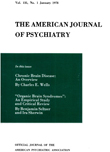EMOTIONAL AND PSYCHOLOGICAL FACTORS IN EPILEPSY: PHYSIOLOGICAL BACKGROUND
Abstract
1. An elementary seizure discharge is characterized by high amplitude, synchronized activity expressed by interlocking brain wave rhythms of different frequencies. Among various components of the electrical changes associated with convulsions, slow waves of polarization may play an important role during both ictal and postictal stages.
2. Rhinencephalic structures show the lowest threshold. Their epileptic discharges show the most intricate organization. Traveling slow waves of polarization are very easy to induce in the olfactory brain, particularly in the Ammon's Formation. Contrasting with the complexity and intensity of the electrical correlates of the seizure discharges, there is a meagerness of its "clinical" expression in animals in terms of motor activity. Awareness is impaired and certain manifestations of emotional disturbances are reported. Experiments with ablation and chemical stimulation confirm the role of the rhinencephalon in emotional control. Experiments with sensory stimulation which reveal a high level of intergration also show an unusual reaction of hypersynchronization under certain conditions.
3. An epileptogenic excitation of a limited extent may produce psychological manifestations by a dual mechanism: ( a) Only partial decrease of awareness may be experienced by the patient as a threat of ego dissolution and thus stir his emotional reactions. ( b) The involvement of certain specific areas ( for instance the rhinencephalon) may be expressed by disturbances of the emotional control.
4. Emotional stimuli may induce a convulsion through either ( a) a creation of a general excitatory state with an excessive formation of either acetylcholine or insulin; or ( b) a preliminary conditioning of certain stimuli which Set up epileptogenic states in those areas of the brain which participate in the control of emotional processes ("affectogenic" epilepsy).
Access content
To read the fulltext, please use one of the options below to sign in or purchase access.- Personal login
- Institutional Login
- Sign in via OpenAthens
- Register for access
-
Please login/register if you wish to pair your device and check access availability.
Not a subscriber?
PsychiatryOnline subscription options offer access to the DSM-5 library, books, journals, CME, and patient resources. This all-in-one virtual library provides psychiatrists and mental health professionals with key resources for diagnosis, treatment, research, and professional development.
Need more help? PsychiatryOnline Customer Service may be reached by emailing [email protected] or by calling 800-368-5777 (in the U.S.) or 703-907-7322 (outside the U.S.).



